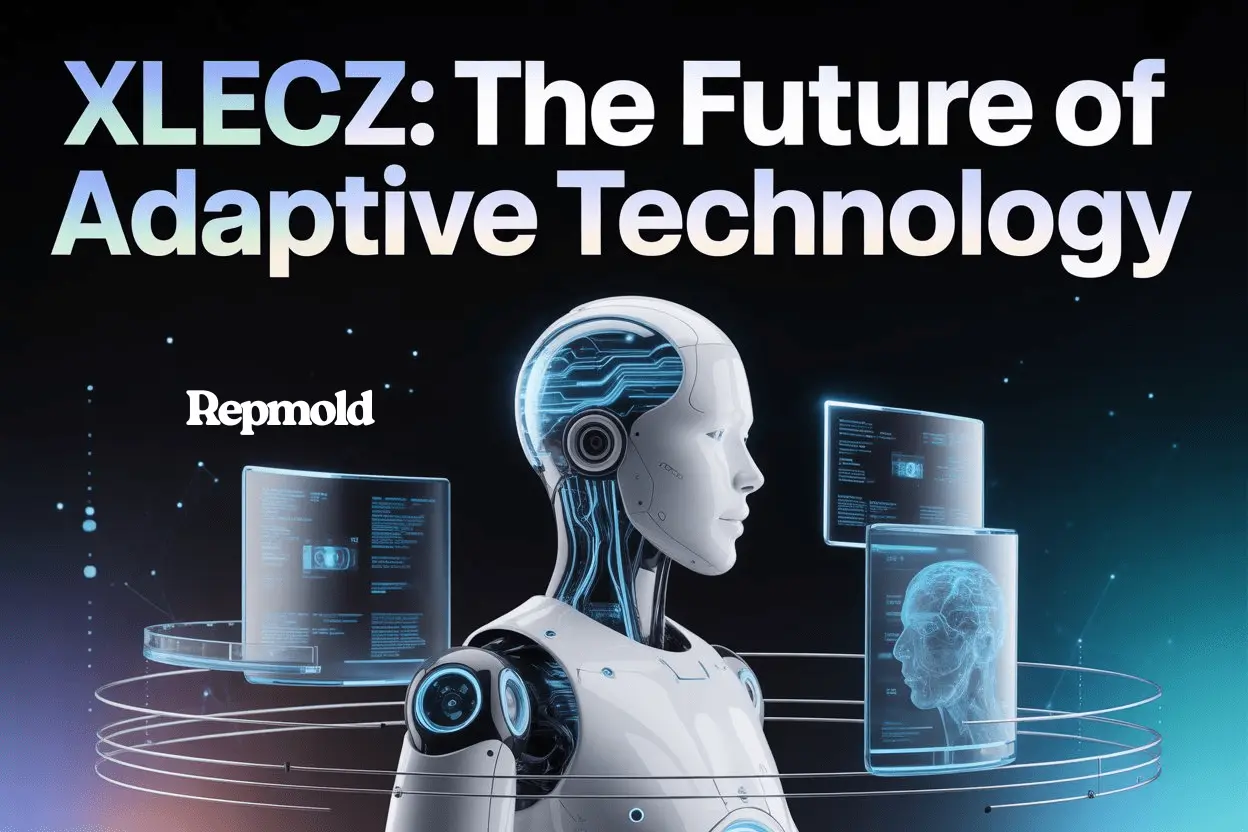Introduction
In today’s fast-changing digital world, Xlecz is becoming a word everyone is starting to notice. It represents the idea of adaptive and intelligent technology that grows and learns with users. Unlike traditional systems, Xlecz is designed to adjust in real time, creating smarter, faster, and more personal experiences.
Moreover, it stands out because it connects innovation, flexibility, and automation in one unified framework. From smart homes to healthcare, many industries are exploring how Xlecz can simplify complex systems and make them more human-centered. As a result, it’s not just a concept—it’s a glimpse into the future of technology.
In short, Xlecz symbolizes a shift toward responsive, data-driven platforms that evolve continuously. This futuristic approach is why Xlecz is quickly becoming a buzzword in modern tech and a foundation for tomorrow’s intelligent systems.
What Is Xlecz? The Core Concept Explained
Xlecz is an adaptive, AI-powered framework designed to make technology smarter and more responsive. It works by learning from user behavior, system data, and environmental changes to improve performance automatically. Unlike fixed systems, Xlecz keeps evolving, offering a more personalized and efficient experience each time.
Moreover, it bridges technology, personalization, and machine learning into one flexible system. It doesn’t just react—it predicts what users may need next. Through this, it creates a smooth connection between human actions and digital responses.
In simple terms, Xlecz is a system that thinks, adapts, and grows with its environment. It turns static technology into something intelligent and dynamic, helping industries deliver real-time solutions with greater accuracy and speed.
The Origins and Evolution of Xlecz
The story of Xlecz began with the rise of adaptive systems and cybernetics. These early ideas focused on machines that could learn, adjust, and react to change. Over time, this vision inspired the foundation of Xlecz—a system built to evolve just like human intelligence.
As technology advanced, cloud computing gave Xlecz the power to process massive amounts of data quickly. This allowed it to adapt in real time without heavy local resources. Furthermore, edge technology improved its speed and efficiency by bringing computing closer to the source of data.
Together, these innovations transformed Xlecz from a concept into a scalable and intelligent framework. It now combines the flexibility of cloud systems with the precision of adaptive computing, creating a new era of smart digital interaction.
Why Xlecz Matters in Today’s Digital Age
Today’s world moves fast, and users expect everything to work in real time. They want systems that understand their needs and adjust instantly. This growing demand for personalized experiences has changed how technology must perform.
Here, Xlecz plays a vital role. It adapts to user behavior and automates tasks without constant manual updates. Unlike traditional systems, it learns continuously and improves with every interaction.
Through AI-driven adaptability, Xlecz delivers faster responses, smarter decisions, and smoother workflows. It helps businesses offer services that feel personal, efficient, and connected. In short, Xlecz bridges human expectation and machine intelligence—making technology truly responsive to modern life.
Key Applications of Xlecz Across Industries
- Smart Homes:
- Xlecz enables personal automation that adapts to user habits.
- It learns lighting, temperature, and security preferences for comfort and energy savings.
- Systems adjust automatically without manual setup.
- Digital Healthcare:
- Xlecz supports predictive health monitoring and smart alerts.
- It analyzes patient data in real time for early detection of issues.
- Doctors and users receive instant feedback to improve health outcomes.
- E-learning:
- Xlecz builds custom learning paths based on student performance.
- Lessons adapt in difficulty, pace, and content for better understanding.
- It enhances student engagement through personalized learning experiences.
- E-commerce:
- Xlecz drives dynamic interfaces that react to customer behavior.
- It updates product recommendations and layouts in real time.
- Businesses benefit from higher conversions and improved user satisfaction.
Overall, Xlecz unites adaptability and intelligence, transforming how each industry interacts with users and data.
How Xlecz Works: Inside the Adaptive Framework
Xlecz functions through a smart three-layer adaptive framework. First, the input layer collects data from users, devices, and environments. It continuously observes actions and preferences. Next, the processing layer analyzes this data using advanced algorithms and pattern recognition. It identifies trends, predicts needs, and prepares suitable responses. Finally, the response layer delivers real-time actions, updates, or adjustments based on processed information.
Moreover, Xlecz relies on feedback loops to learn and improve. Each user interaction refines its decision-making and accuracy. Over time, these loops allow the system to evolve intelligently. Thus, Xlecz becomes more adaptive, personalized, and efficient. In short, the framework ensures seamless interaction, real-time optimization, and continuous self-improvement across multiple applications.
Benefits of Embracing Xlecz Technology
Xlecz offers many advantages that make it valuable in today’s digital world. First, it delivers high personalization by understanding user behavior and preferences. Every interaction becomes more relevant and meaningful. Second, it ensures greater efficiency through automation and intelligent decision-making. Tasks complete faster with fewer errors.
Moreover, Xlecz provides excellent scalability, allowing systems to grow easily with rising data demands. It also improves cost-effectiveness by reducing manual work and energy use. Over time, businesses save more while maintaining performance.
Additionally, Xlecz minimizes human intervention through self-operating processes. It continuously monitors, adapts, and updates systems automatically. As a result, organizations experience smoother operations, better accuracy, and long-term sustainability powered by intelligent automation.
Challenges and Ethical Considerations
While Xlecz offers great potential, it also brings several challenges that need attention. One major concern is data privacy, as the system collects and analyzes large amounts of personal information. Without strict safeguards, this data could be misused or exposed.
Another issue is over-adaptation, where systems may adjust too much and lose balance or accuracy. Therefore, maintaining control and clear boundaries is essential.
Moreover, transparency plays a key role in building user trust. People should know how their data is used and why. Similarly, strong security measures are vital to prevent breaches and manipulation.
Finally, ensuring user control allows individuals to manage preferences and permissions confidently, creating a fair and ethical digital environment with Xlecz.
Real-World Examples and Early Implementations
Xlecz is already making its presence felt in various industries and research labs. In IoT applications, it powers smart environments that learn user behavior and adjust automatically. For example, intelligent home systems use Xlecz to manage lighting, temperature, and energy with precision.
In healthcare, early implementations focus on predictive patient monitoring and adaptive treatment alerts. This helps doctors make faster and more accurate decisions.
Additionally, AI-driven startups are integrating Xlecz for real-time analytics and customer personalization. These companies use its adaptive intelligence to optimize digital interactions.
Across Europe, Xlecz is gaining traction in advanced R&D centers working on edge computing and automation. Globally, innovators see it as a foundation for building smarter, more connected ecosystems.
The Future of Xlecz: Shaping Tomorrow’s Intelligent Systems
The future of Xlecz looks deeply connected with next-generation intelligent ecosystems. It will soon integrate into autonomous systems, enabling cars, drones, and robots to make real-time adaptive decisions. In the metaverse, Xlecz will create more immersive and personalized virtual experiences through continuous learning and behavioral mapping.
Moreover, it will transform smart environments, allowing cities and industries to operate efficiently with minimal human control. As technology evolves, Xlecz will bridge physical and digital spaces, making interactions seamless and intuitive.
Ultimately, Xlecz will play a central role in digital transformation, redefining automation, connectivity, and decision-making. Its adaptive intelligence promises a future where systems evolve naturally—aligning perfectly with human needs and technological progress.
Conclusion: Xlecz as a Philosophy of Adaptive Innovation
Xlecz is not just a technology; it is a philosophy of continuous progress. It represents how adaptability drives innovation and shapes a smarter future. Through learning, evolving, and responding, Xlecz mirrors the way humans grow and improve.
Moreover, it teaches that flexibility is the real power behind sustainable digital success. Every system that adapts becomes more intelligent, efficient, and future-ready.
In essence, Xlecz encourages us to see change as opportunity, not challenge. It inspires industries, developers, and individuals to embrace adaptability as the core of evolution. The future belongs to systems—and people—that can learn, adjust, and move forward with purpose.

